#sonthonax
Explore tagged Tumblr posts
Text
Paradoxes in the Revolutions of 1792 and the Revolt of 1870
Warning: There are some text elements in the treatment of Algerian deportees in New Caledonia that are shocking. So refrain from reading if you are not ready.
Do you share my impression of certain aspects of the different revolutions or uprisings in France? I mean, the French Revolution, at its most left-leaning during the government of Year II, was very conservative regarding property rights. Regarding property rights, the entire political class was very timid, even the far left like the Enragés and the Hébertists, who were more focused on economic issues like taxation. However, some, like Momoro, apparently began to consider land redistribution, such as sharing large farms, but without a clear plan (and far from any notion of collectivization of agriculture). There was a concession made by the Convention on property rights with the Ventôse Laws, perhaps? And it is true that on certain economic issues, there were conservative elements, even though during the journée of September 5, 1793, the sans-culottes managed to extract the maximum.
Even Gracchus Babeuf, who seems to advocate for collective exploitation, primarily talks about agriculture. I'm not saying there weren't progressive aspects. There were, like the introduction of universal suffrage, for example, and many other aspects, such as the fact that deputies like Louis Michel le Peletier defended the project to implement free, mixed, secular, and compulsory education, supported by several deputies, including Robespierre (it's sad that this was only adopted years later by a man who, opportunistically, in my opinion, lacked the integrity of Le Peletier, who seems to have been opposed to most of the revolutionaries of 1793-1794 and who unjustly reaped all the credit for this project—I’m talking about Jules Ferry, sorry to the fans of this character). But it must be acknowledged that there were also conservative aspects.
Paradoxically, the Convention proved to be extremely progressive compared to so many others regarding the colonies. The abbé Raynal, so conservative on property rights, apparently called Toussaint Louverture the "Black Spartacus." Sonthonax, considered a Brissotin and advocate of gradual abolition of slavery, did not hesitate to oppose the colonists and slaveholders (just like the Convention) by granting full citizenship to the revolting slaves of 1791 barely a year later. There was the dissolution of the colonial assembly, and important and well-known revolutionaries enthusiastically supported the revolts of the colonized, even their independence, like Deputy Marat or the prosecutor of the Commune, Chaumette, among many others. Black deputies were elected, such as Jean-Baptiste Belley. Some Black people managed to attain high ranks. The overly hostile colonists could be expelled, and there was the dismissal of Governor Philippe Blanchelande, who had distinguished himself by his fierce repression of the slave revolt. During his execution in 1793, Rosalie Julien, one of the important women of the revolution, wrote, "He made the blood of Blacks and patriots flow in streams." It is important to note that she equated the attack on Blacks with that on people considered patriots, a more common position at that time than one might think. I know we must be careful about anachronisms, but I feel that aside from a distrust of foreigners (though this did not prevent people like Fleuriot Lescot or Claude François Lazowski, who came from a Polish family, from holding important positions), the French political class was less racist in 1794 than in 1870 or during the mid-20th century, especially concerning the colonies and overseas territories. There was a regrettable step backward (honestly, can you imagine the Convention of Year II, or the Jacobin or Cordelier Clubs tolerating even the idea of a horrible human zoo as we saw in 1906? I can't). Of course, there were people who supported slavery at that time, like Cloots (a very questionable and paradoxical figure of the revolution, considered close to the Hébertists, yet a very wealthy and conservative man regarding property rights, who had pro-slavery thoughts and was a fervent supporter of colonization because his family and he profited from it, even though he supposedly wanted the Revolution to extend beyond borders according to his own words; according to historian Antoine Resche, he called himself the orator of the human race—very complicated as a revolutionary).
For those who think of the left envisioned by Karl Marx, we're still far from it. Here's an excerpt from The Holy Family: "The revolutionary movement that began in 1789 with the social circle, which, in the midst of its course, had as its main representatives Leclerc and Roux and eventually succumbed temporarily with Babeuf's conspiracy, had sown the seeds of the communist idea, which Babeuf's friend, Buonarroti, reintroduced in France after the revolution of 1830. This idea, developed consistently, is the idea of the new state of the world." Moreover, I have encountered communists who heavily criticize the revolutionaries, except for some ultra-revolutionary members (a few have even added Marat to the list of characters they appreciate, though they know he was not an ultra-revolutionary) by explaining that, in their view, the second revolution from 1792 until the fall of the last Montagnards like Charles Gilbert Romme remained bourgeois, though less so than the one of 1789.
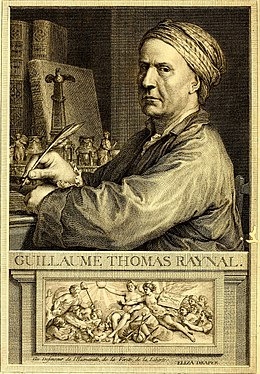
Abbé Raynal
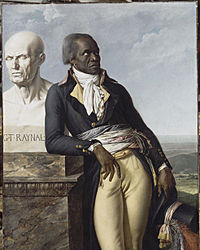
Jean Baptiste Belley
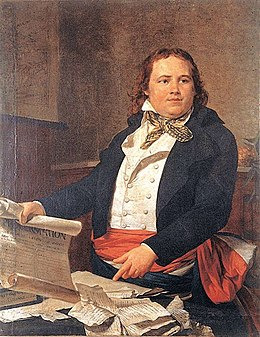
Léger-Félicité Sonthonax
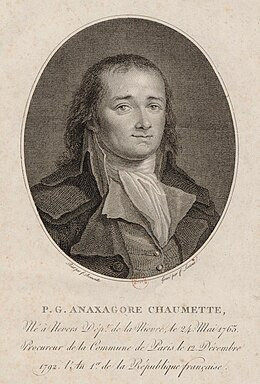
Pierre-Gaspard Chaumette
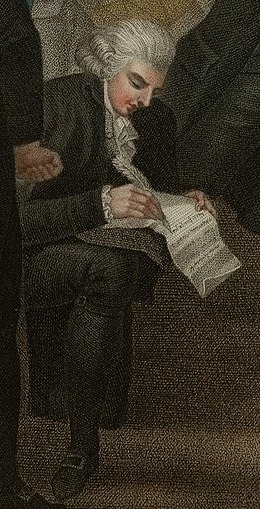
Jacques Roux
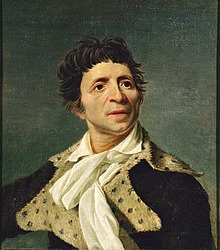
Jean Paul Marat
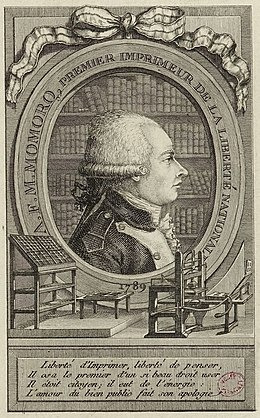
Antoine-François Momoro
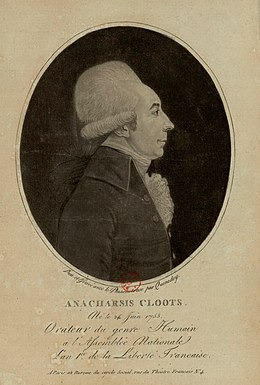
Anacharsis Cloots
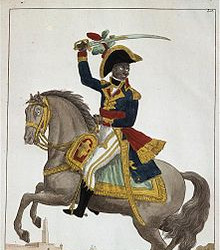
Toussaint Louverture
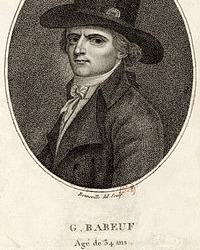
Gracchus Babeuf
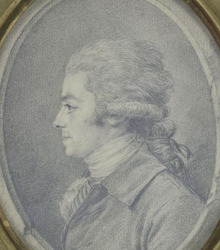
Jean-Baptiste Edmond Fleuriot-Lescot

Rosalie Jullien
On the other hand, we have the Paris Commune uprising of 1870, which ended in horrific repression (some estimate that 10,000 people died within a week in the city of Paris).
The origins of this Paris Commune are quite complex to explain, involving the fall of Napoleon III's dictatorship, Bazaine's lamentable behavior, the fact that the new regime forming a republic was composed of monarchists while Paris was predominantly republican, the new regime's abolition of wages, which was one of the only sources of income for workers, and so on.
These Paris communards represented various leftist movements, including the Blanquists, named after Auguste Blanqui (a small anecdote: the composer of "The Internationale" was a communard named Eugène Pottier), anarchists, Proudhonians, as well as centralists like Delescluze (some might even call them Jacobins, though I am not well-informed about that), and even collectivists. The Paris Commune marked a significant shift to the left (albeit briefly). I will mention four measures passed by this government: the abolition of night work (at least for bakers), the separation of Church and State, free, secular, and compulsory education, and the elimination of distinctions between legitimate and illegitimate children.
The repression was atrocious, with death sentences raining down (one of the key figures in the repression, alongside Thiers, was Jules Ferry), and deportations to New Caledonia as well.
It is here that the communards (or at least a significant number of them) were less progressive on certain issues than the main actors of the Convention of Year II. Except for individuals like Louise Michel or Charles Malato, the son of deported communards who followed them to Nouméa, most of the communards did not support the Kanaks at all. There was a lingering racist attitude towards these colonized people, who were also fighting against the injustices imposed on them by the French government. Some even participated in the repression against the Kanaks following the Great Kanak Revolt of 1878, whose main leaders were Atai, chief of Komalé, and Cavio, chief of Nékpi, among others.
I have the impression that the communards behaved similarly toward the deported Algerians. Indeed, in 1869, a significant new insurrection broke out in Algeria, spreading from Kabylie, the Aurès, and towards Algiers, and other territories (the war against France began in 1830, with the defeat of Emir Abdelkader in 1847, the division of three departments in 1848, and the continued Algerian resistance against the establishment of the French colony, notably led by Lalla Fatma N’Soumer and Cherif Boubaghla, though Fatma N'Soumer was captured by the French army in 1857 and died in captivity in 1863 at the age of 33, and Cherif Boubaghla died in combat in 1854; other uprisings lasted until 1870, and one of the most significant was that named Mokrani revolt ).
The insurrection was defeated after fierce fighting, with death sentences raining down, the expulsion of tribes, the sequestration of property, and deportations as well, with around 60 deportees dying from the conditions of deportation. Louise Michel described their arrival in these terms: "We saw them arrive in their great white burnouses, the Arabs deported for having also risen up against oppression. These Orientals, imprisoned far from their tents and flocks, were simple and just, and could not understand the way they had been treated."
They had even fewer privileges than the deported communards. According to some sources, they were chained with red-hot irons, subjected to more intense forced labor, and had to eat soup from the shoes of the jailers. They were forcibly separated from their wives, leading some to marry Kanaks, while others married communard women. It is true that some communards, like Louise Michel and Jean Allemane, campaigned for their amnesty. There were escapes by Algerians, some of whom were recaptured. One of the most famous was Azziz El Haddad, who died in the home of his friend the communard and former deportee Eugène Mourot on August 22, 1895, in Paris. Mourot was also opposed to the colonization of Algeria. A collection by the communards against colonization ensured that his body was repatriated to Algeria.
However, while some deported communards supported them, it should not be forgotten that other communards were driven by colonialist mindsets. It is also interesting to learn more about the Commune of Algiers, proclaimed by Alexandre Lambert, among others. Some European insurgents supported a fraternal republic, but one that excluded Algerian insurgents. Alexandre Lambert, who was killed during the Bloody Week, published a newspaper called Le Colon. The title is quite telling.
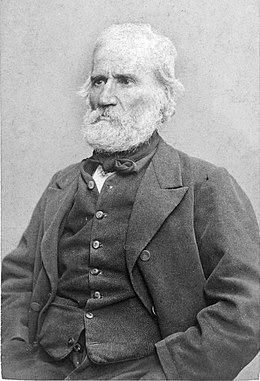
Auguste Blanqui
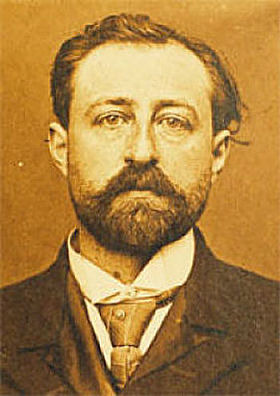
Charles Malato
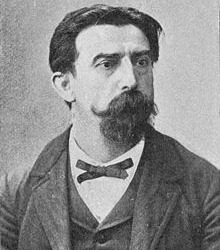
Jean Allemane
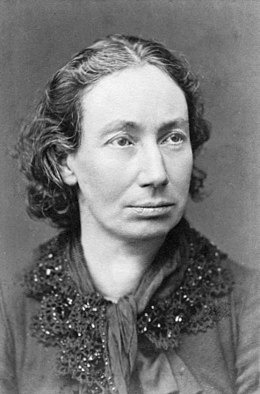
Louise Michel
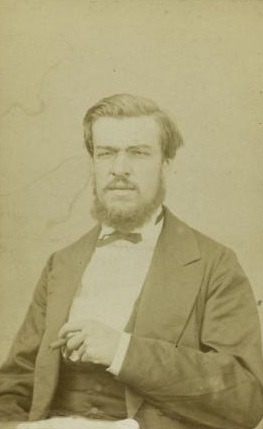
Eugène Mourot
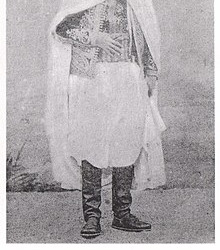
Bou-Mezrag El-Mokrani, brother of Mohamed El-Mokrani
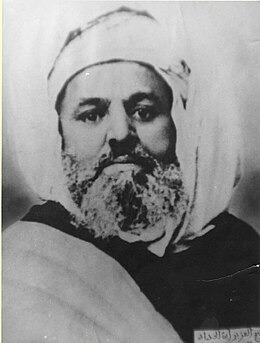
Cheikh El Haddad father of Aziz el Haddad and Cheikh M'hand
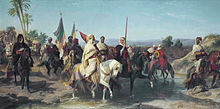
Chérif Boubaghla and Lalla Fatma N'Soumer (Henri Félix Emmanuel Philippoteaux, 1866) alleged portraits
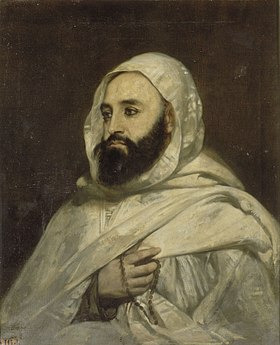
Émir Abdelkader
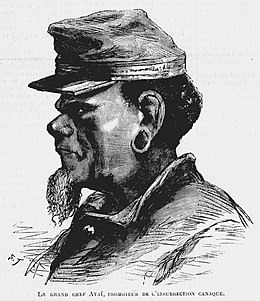
Ataï
And so, this is the paradox of these two French "revolutionary groups" from 1792-1794, and the group of the Communards from 1870. The first group, still very timid on certain social rights such as property rights (even within the extreme left), was nevertheless much more committed to advocating for more rights among men of different colors, with some even going further by supporting the ideas of revolts by the colonized. Moreover, the colonizers were much less listened to after a certain point in time.
In contrast, during the Paris Commune, while there were more progressive ideas and people who were less conservative about property rights (after all, there was representation from collectivists), they were much less engaged in supporting the colonized and at times even approved of colonial repressions.
Sources: Jean Marc Schiappa Alain Decaux Antoine Resche Mehdi Lallaoui - Kabyles du Pacifique
P.S.: I'm not trying to hand out praise or criticism regarding property rights. I'm merely attempting to make an observation. In fact, I might even be wrong on certain points, so I invite you to correct me. And I don't intend to bash the Paris Communards, many of whom suffered or gave their lives for an ideal Republic, and whose horrific repression we don't often discuss. But it's important to acknowledge everything, including their mistakes. Perhaps one day I should address the question of the French left as a whole, from 1789 to 1962, concerning colonization.
#frev#french revolution#france#commune#Paris Commune#1700s#1800s#algeria#new caledonia#colonization#Kanaks#marat#louise michel#Blanqui#babeuf#sonthonax#toussaint louverture#third republic
23 notes
·
View notes
Text

231 Years Ago, the French National Convention Abolished Slavery
On February 4, 1794, the French National Convention made a radical decision: it abolished slavery in all its colonies. Enslaved people, who had been legally classified as biens meubles (property under French law), were now recognized as French citizens.
The decree formalized changes that were already underway in Saint-Domingue (modern-day Haiti), where enslaved people had launched a massive uprising against their masters in August 1791. By 1793, French commissioners Léger-Félicité Sonthonax and Étienne Polverel had already abolished slavery on the island. Historians widely agree that the Convention’s bold move influenced Toussaint Louverture’s decision to switch alliances during the ongoing colonial war, abandoning the Spanish to fight alongside the French. (Read more)
56 notes
·
View notes
Text
Finishing Mike Duncan's revolutions series and I'm sad to think of all the people that would have loved the 21st century.
Prince Rupert would have a series of tik toks on hair care products and occasionally one on proper horse riding techniques
Jefferson would be on Threads posting nonsense for views, blocking anyone who asks him about Palestine
Marat would be on Twitter and be insufferable. Just terminally online brain rot. Novel length threads that never end.
Saint-Just would be posting detailed take down videos on YouTube
Louverture would probably be on Tumblr, in a constant feud with Sonthonax. They both blocked Napoleon
Rochambeau meanwhile would be posting incredibly offensive things and claiming they're just jokes.
Bolivar gives strong Facebook energy. He's Facebook friends with Miranda, but Miranda is Facebook friends with about 3000 people so it's not much.
Louis Phillipe is 100% on Threads posting the most perfect centrist takes of all time. He also blocks you for mentioning Palestine.
Lajos Kossuth had a giant following on Tumblr, but seriously fucked it up when he went on a rant about immigrants not learning the language of the country they immigrate to. Also he turns out to be a TERF.
Everyone from the Paris Commune is on Tumblr and are just constantly screaming at each other. Alphonse Tierre is the Tumblr admin who keeps shutting down trans blogs.
Pancho Villa is an expert level shit poster on Twitter. Just brutal take downs left and right.
Trotsky would be posting absurdly long posts on Tumblr that no one reads but everyone shares. Stalin screenshots things out of context to make him look bad.
Lenin somehow shouts free Palestine while also saying Ukraine is the real aggressor.
2 notes
·
View notes
Text
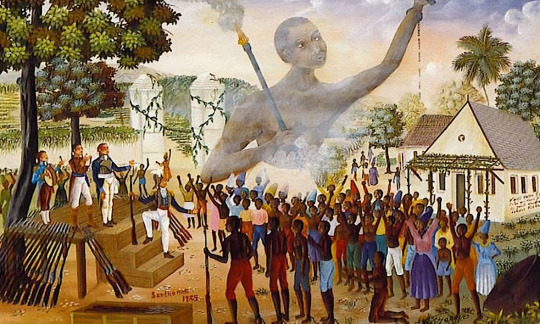
Eddy Jacques, Sonthonax distribue des armes aux esclaves, 29 août 1793.
2 notes
·
View notes
Text
Events 4.14 (before 1930)
43 BC – Legions loyal to the Roman Senate, commanded by Gaius Pansa, defeat the forces of Mark Antony in the Battle of Forum Gallorum. 69 – Vitellius, commanding Rhine-based armies, defeats Roman emperor Otho in the First Battle of Bedriacum to take power over Rome. 966 – Following his marriage to the Christian Doubravka of Bohemia, the pagan ruler of the Polans, Mieszko I, converts to Christianity, an event considered to be the founding of the Polish state. 972 – Otto II, Co-Emperor of the Holy Roman Empire, marries Byzantine princess Theophanu. She is crowned empress by Pope John XIII in Rome the same day. 1395 – Tokhtamysh–Timur war: At the Battle of the Terek River, Timur defeats the army of the Golden Horde, beginning the khanate's permanent military decline. 1471 – In England, the Yorkists under Edward IV defeat the Lancastrians under the Earl of Warwick at the Battle of Barnet; the Earl is killed and Edward resumes the throne. 1561 – A celestial phenomenon is reported over Nuremberg, described as an aerial battle. 1639 – Thirty Years' War: Forces of the Holy Roman Empire and Electorate of Saxony are defeated by the Swedes at the Battle of Chemnitz, ending the military effectiveness of the Saxon army for the rest of the war and allowing the Swedes to advance into Bohemia. 1775 – The Society for the Relief of Free Negroes Unlawfully Held in Bondage, the first abolition society in North America, is organized in Philadelphia by Benjamin Franklin and Benjamin Rush. 1793 – The French troops led by Léger-Félicité Sonthonax defeat the slaves settlers in the Siege of Port-au-Prince. 1816 – Bussa, a slave in British-ruled Barbados, leads a slave rebellion, for which he is remembered as the country's first national hero. 1849 – Hungary declares itself independent of Austria with Lajos Kossuth as its leader. 1858 – The 1858 Christiania fire severely destroys several city blocks near Stortorvet in Christiania, Norway, and about 1,000 people lose their homes. 1865 – U.S. President Abraham Lincoln is shot in Ford's Theatre by John Wilkes Booth; Lincoln dies the following day. 1865 – William H. Seward, the U.S. Secretary of State, and his family are attacked at home by Lewis Powell. 1881 – The Four Dead in Five Seconds Gunfight occurs in El Paso, Texas. 1890 – The Pan-American Union is founded by the First International Conference of American States in Washington, D.C. 1894 – The first ever commercial motion picture house opens in New York City, United States. It uses ten Kinetoscopes, devices for peep-show viewing of films. 1895 – The 1895 Ljubljana earthquake, both the most and last destructive earthquake in the area, occurs. 1900 – The world's fair Exposition Universelle opens in Paris. 1906 – The first meeting of the Azusa Street Revival, which will launch Pentecostalism as a worldwide movement, is held in Los Angeles. 1908 – Hauser Dam, a steel dam on the Missouri River in Montana, fails, sending a surge of water 25 to 30 feet (7.6 to 9.1 m) high downstream. 1909 – Muslims in the Ottoman Empire begin a massacre of Armenians in Adana. 1912 – The British passenger liner RMS Titanic hits an iceberg in the North Atlantic and begins to sink. 1929 – The inaugural Monaco Grand Prix takes place in the Principality of Monaco. William Grover-Williams wins driving a Bugatti Type 35.
0 notes
Text
It demonstrates Robespierre's point in my eyes : he was committed, but never enough, always pursuing the politics of the 'middle ground.' Here, it's the same thing. He’s not like Barnave; he wants to abolish slavery but it seems that he is against the idea of arming the Black people and their revolt in Saint Domingue (unlike people like Marat and Chaumette, who fully support the insurrection). Unless it's just a way to 'undermine' the Girondins like Sonthonax (although Sonthonax's distribution of weapons to former slaves happened later, if I'm not mistaken)
…the same faction (the girondins) which in France wanted to reduce all the poor to the condition of helots, and submit the people to the aristocratic rule of the rich, wanted in an instant to free and arm all the Negroes to destroy our colonies.
Robespierre in Rapport sur la situation politique de la république, read at the Convention on November 17 1793
Thoughts?
69 notes
·
View notes
Text
Upon reading my physical copy of a history book called Hayti or the Black Republic by Spencer St John. When it talks about a man named Léger-Félicité Sonthonax who was a French abolitionist and a Former Commissioner of Saint-Domingue and a member of the 'Society of Friends Of The Blacks' (he was definitely not a friend to anyone). With some extra digging, seems like he was responsible for the influence of the white genocide in Haiti. Turning different races against each other, even against their own. Seems that I noticed a familiar pattern.
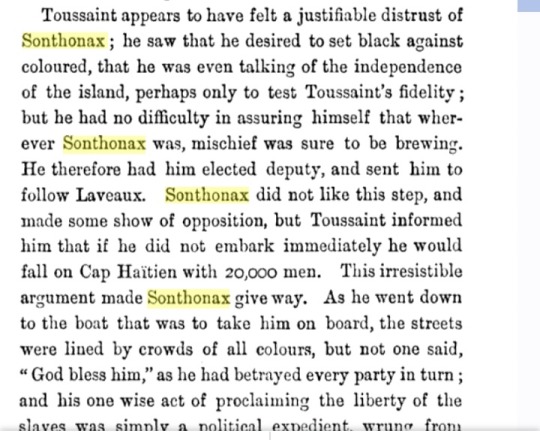
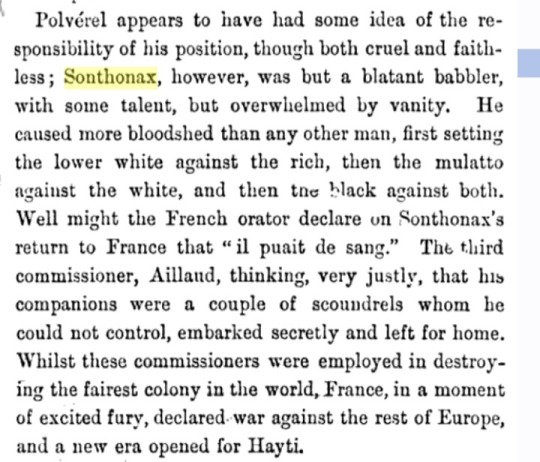
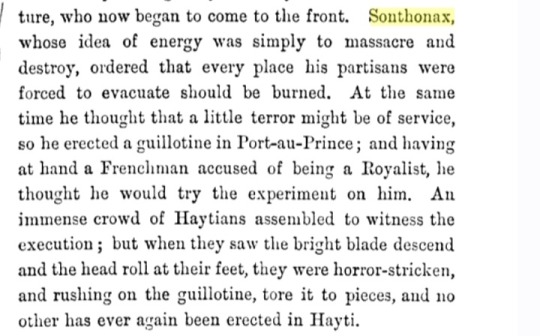
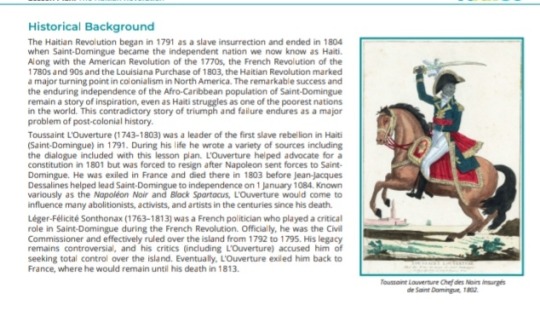


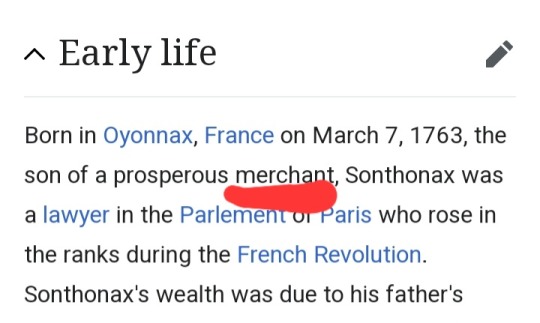

27 notes
·
View notes
Photo

February 4, 1794 France freed French colonies in Caribbean
Jean-Baptiste Belley-Mars, who represented Saint-Domingue in the French National Convention in Paris in 1794, is widely credited with persuading that body to abolish slavery in France and its overseas colonies. Belley-Mars as a boy was kidnapped by slave catchers on the island of Goree near Dakar, Senegal, and shipped off to the French Caribbean colony of Saint-Domingue (now the Republic of Haiti). He purchased his freedom from his owner, enlisted in the military, and served in a contingent of black and mulatto troops called Volunteer Chasseurs that was sent to fight against the British in Georgia during in the American Revolutionary War. Returning to Saint-Domingue, Belley-Mars became a well-to-do planter with a penchant for politics.
News from France in 1789 of the storming of the Bastille set in motion revolution in Saint-Domingue and pitted whites (grands blancs and petits blancs) against black slaves and mulatto freedmen led by Toussaint L’Overture demanding liberty and equality. When in 1793 the Jacobin Léger-Félicité Sonthonax was dispatched to administer the colony, Belley-Mar, now a middle-aged officer, joined him in crushing a rebellion of the whites and opposing L’Overture. As a reward for his loyalty, Belley-Mars was one of three men and the only black person elected to represent the colony at the Convention Nationale in Paris.
As reported in Le Moniteur Officiel, on February 4, 1794, after having their credentials authenicated, the three delegates from Saint-Domingue were welcomed into the hall of the Convention with exuberant applause, hugs, and, as customary in France, kisses on both cheeks. The next morning, Belley-Mars further secured his place in history when he delivered to the Convention a lengthy, emotionally-charged speech which denounced the inhumanity of slavery and demanded its abolition. Carried away by the moment, a white delegate rose to voice his shame and rebuked the nation for the horrors it allowed in the colonies. Then, by acclamation, the Convention voted to end slavery. Belley-Mars, the man of the hour, returned to the rostrum to receive embraces and unrestrained congratulations.
Belley-Mars extented his stay in France, survived the Reign of Terror, and served on the Council of Ancients and the Council of Five Hundred. Before returning home to Haiti in 1797, he posed for a portrait by Anne-Louis Girodet de Roucy-Troison. This portrait, still on display in the chapel of the Palace of Versailles, has best preserved the memory of the former slave and abolitionist leader.
By 1802 when Napoleon Bonaparte sent an army to Saint-Domingue to reestablish slavery and defeat the blacks led by Toussaint L’Ouverture, Belley-Mars, now a constable, was eventually persuaded to oppose the brutal tactics of the French. Because of that opposition, he was forced to return to France, immediately arrested, and imprisoned for at least two years at the notoroius Belle-île Prison. The exact date, place, circumstances, and manner of his death has cannot be determined, but his memory is preserved in a medallion at the Bibliothèque de Nationale de Paris, and his chalk-and-ink portrait sketch by Girodet at the Art Institute of Chicago in Illinois.
15 notes
·
View notes
Text
Listening to the new episode of Age of Napoleon as I play Hades and just got to hear Sonthonax described as looking like ‘Bilbo Baggins, without the charm’.
Which, just, brutal.
8 notes
·
View notes
Quote
When a group of whites broke into a prison and massacred whites and slave insurgents locked up there, he blamed the attack on a political group in Le Cap and disbanded it. When Polverel criticized his actions, Sonthonax retorted: "You accused me of having violated in this the rights of man and citizen, as if the rights of men could be claimed in a land of slavery."
Avengers of the New World
3 notes
·
View notes
Text
Lazare Carnot and the Colonial Question?
I just came across a document on JSTOR (my computer is in a good mood today, so I managed to read 10 pages)
I was reading the article Éthique et rhétorique de la Révolution chez Gracchus Babeuf et Toussaint Louverture.
The author discusses the date on which Gracchus was executed, May 27, 1797, and how shortly before, he had written an open letter criticizing the policies of the Directory. The author draws a parallel with Toussaint Louverture.
“Two days later, on Prairial 10, Year V, the pro-royalist colonist Vienot-Vaublanc, a prominent member of the Council of Five Hundred, delivered an ‘impolitic and incendiary’ speech about the general situation on the island of Saint-Domingue, which prompted a lengthy Réfutation of Certain Assertions in a Speech Delivered at the Legislative Body, written by Toussaint Louverture. Then, on Brumaire 15, Year VI, Toussaint Louverture sent a similar letter to the Directory, openly criticizing the colonial party in France as ‘enemies of the current system.’”
So far, I understand the parallel between Toussaint Louverture and Gracchus Babeuf.
But here’s where I get lost:
“It is easy to note, following a simple chronology of events, the almost perfect intertwining of the respective fates of Babeuf and Louverture under the Directory, then the Consulate. Scarcely had Babeuf’s body been beheaded, and the ‘Babouviste’ question ‘resolved’ by Carnot, when (...), under pressure from the colonists, set about tackling the colonial situation again, reactivating the colonial question that had remained unresolved, provoking what Jaurès would rightly call a ‘wounding of the revolutionary conscience.’”
End of the text excerpt. The source on Carnot in this article is listed as Marcel Dorigny and Bernard Gainot, La Révolution et la "question coloniale."
The problem is that, from my previous readings, I had always thought, according to historian Frédéric Régent (if I’m not mistaken—I'll need to find the reference) that at least two-thirds of enslaved people had been emancipated. Victor Hugues was criticized for his ambiguous stance, whereas Sonthonax was much more committed to the abolition of slavery, although it's more complicated than that. Eventually, Victor Hugues would become a supporter of re-establishing slavery under Bonaparte in Guadeloupe, while his revolutionary colleague Alexandre Kirwan would side with Delgrès and Ignace against slavery and ultimately lose his life.
I also previously explained in another post that Bonaparte’s reinstatement of slavery was illegal. As for 1797, we are in a period where there is the abolition of slavery , as far as I know, and therefore the Directory did not violate the law on slavery . So, this is where I’m a bit confused: I know there were influential figures within the Directory who favored reinstating slavery, but it hadn’t actually been reinstated. Perhaps the author of the article is referring to the seizure of lands that were then redistributed to colonists. I couldn’t delve into the entire article, having accessed only the first 10 pages.
This article is making me rethink what I thought I knew, especially since it’s well-sourced. (But then again, we’re all here to learn in one way or another. 🧐)
You get it—this is a call for more information. So, if anyone has answers, please let me know.
Here the link of the article:
https://www.jstor.org/stable/43932870
17 notes
·
View notes
Text
11 Mai 1796: arrivée de la troisième commission civile à Saint Domingue
11 Mai 1796: arrivée de la troisième commission civile à Saint Domingue.- #Juno7 #J7Mai2021
“Un peuple sans mémoire est un peuple sans avenir”, disait Aimé Césaire. Voici l’éphéméride du 11 Mai 2021. Composée de Sonthonax, Roume, Giraud, Leblanc, et Julien Raymond, cette commission accompagnée de plusieurs centaines de soldats et formée par le Directoire le 23 janvier 1796 était chargée de rétablir l’autorité de la France remise en question par les différentes composantes de la…

View On WordPress
1 note
·
View note
Text
7 Septembre 1796 : Élection au Cap-Français de six nouveaux députés dont Sonthonax et Lavaux
7 Septembre 1796 : Élection au Cap-Français de six nouveaux députés dont Sonthonax et Lavaux
[ad_1]
Les éphémérides du jour : Les fêtes nationales, les anniversaires des personnalités et les événements importants, les proverbes… l’agence Juno7 vous apporte un rafraîchissement de la mémoire. Nous sommes le samedi 7 septembre 2018, 250e jour de l’année 36e semaine et 115 jours restants.
7 Septembre 1796 : Election au Cap-Français de six nouveaux députés dont Sonthonax et Lavaux: Ces…
View On WordPress
0 notes
Text
Totalitarian, Perverted Antifa Is Just Jacobinism Reborn. But Thermidor Is Coming by Paul Souvestre

The recent sudden eruption of a Totalitarian Left in America is essentially unparalleled in our history. But it has an unmistakable precedent in the early French Revolution: the Jacobins, who briefly held power and imposed a regime of crazed ruthlessness and radicalism before being overthrown by the moderate Thermidorian Reaction (named for the month of Thermidor—changing the calendar was part of the Jacobins’ drive to destroy traditional society and culture). Today, a flagship publication of the U.S. Left is called, incredibly, Jacobin—openly glorying in the implied threat of repression and mass murder. The good news: these revolutionary spasms don’t last. The bad news: they can do a lot of damage.
Jacobinism was the mother of all modern totalitarian ideologies. The Club was formed on April 30, 1789, by anti-royalist deputies to the newly-summoned Estates-General, many of whom were middle-class strivers like lawyer and future leader Maximilien Robespierre. By October 1789, it was reorganized as The Society for Revolution, or The Society of the Friends of the Constitution. Royalist pamphleteers called the club the “Jacobins” because it met at a former Dominican monastery in Paris, the Couvent des Jacobins de la rue Saint-Jacques. By July 1790, the Jacobin Club’s membershipnumbered 1,200 in Paris; 152 clubs had sprouted throughout France.
The ethos of the Jacobins was revolutionary and based in the ideals of the Enlightenment. Its adherents wanted to destroy the French monarchy and replace it with a “democratic” republic disconnected from any influence of the Catholic Church. They were militantly anti-Christian and violent from the beginning, taking inspiration like many others in the revolutionary ferment from Lucifer, the rebel against God.

The Jacobins sought to use the profound anger of the French Revolution to their advantage. And what anger there was. The storming of Versailles by an army of women—and men dressed like women—ended with the decapitation of two guards and a chorus baying for Queen Marie Antoinette’s flesh and blood. Other instances of urban violenceincluded the storming of the Bastille [Demonic: How The Liberal Mob Is Destroying America, by Ann Coulter, Penguin Random House, 2012].
youtube
But that violence paled beside what was to happen between September 5, 1793, and July 28, 1794—the “Reign of Terror.” As Revolutionary France fought for its life against a coalition of European monarchies, the government in Paris decided to secure its power by eliminating suspected counter-revolutionaries. The Jacobins, led by Robespierre and his Committee of Public Safety, suspended the right to a public trial and legal assistance. They arrested 300,000, executed 17,000, and let 10,000 die in prison.

Terror came to the provinces too. As part of the Jacobin assault on local autonomy, soldiers were sent out into the countryside. In the Vendée, they found a peasantry enraged over the destruction of their churches and traditional way of life. They responded by carrying out what amounted to a genocide: French historian Reynald Secher estimated that 117,000 Vendéens out of a population of 815,000 disappeared from the public record during the insurgency. On top of that, eighteen percent of private houses were lost along with approximately fifty percent of all dwellings. [The French Genocide That Has Been Air-Brushed From History, by Jaspreet Singh Boparai, Quillette, March 10, 2019]. As in Paris, churches were turned into whorehouses or made into anti-churches where the Goddess Reason was worshipped instead of Jesus Christ.
This is significant. Aberrant sexual practices were also a core component of the Jacobin revolution—influenced by the Marquis de Sade , the pornographer and pervert who had spent five years in the Bastille for sex crimes before the prison was stormed. The Jacobins promoted free love and promiscuity, tried to ban priestly celibacy and strong-armed priests into getting married [The Jacobin Clubs in the French Revolution, 1793-1795, by Michael Kennedy].
Similarly, just as today’s Antifa Jacobins employ the violence of their ideological ancestors, they also promote sexual libertinism. Antifa recently rioted and even shot counter-protestors for having the gall to demand repercussions for a transexual sex criminal eventually convicted of flashing his genitals at innocent spa customers in Los Angeles [Sex offending suspect claims transgender harassment in Wi Spa case, by Andy Ngo, New York Post, September 2, 2021]. The Antifa Jacobins are also (you won’t read this in the Regime Media) disproportionately involved in sex with children [Antifa has a major pedophile problem, by Anna Slatz, The Post Millennial, March 7, 2020 [paywall]]. De Sade, of course, was also a pedophile [Marquis de Sade: depraved monster or misunderstood genius? It’s complicated, The Conversation, September 24, 2020].
Of interest to Americans given the current border disaster, theJacobin malignancy metastasized to Haiti. In May 1791, the revolutionary government granted political rights to rich free people of color on the island, but the gesture didn’t stop the coming hurricane of sanguinary violence. On August 21, after a voodoo ceremony, slaves rebelled. The slave army reached 100,000. Here’s how Leftist Wikipedia describes the resulting bloodbath:
Masters and mistresses were dragged from their beds to be killed, and the heads of French children were placed on spikes that were carried at the front of the rebel columns. …
[W]ithin the next two months, as the violence escalated, the slaves killed 4,000 whites and burned or destroyed 180 sugar plantations and hundreds of coffee and indigo plantations. At least 900 coffee plantations were destroyed, and the total damage inflicted over the next two weeks amounted to 2 million francs. In September 1791, the surviving whites organized into militias and struck back, killing about 15,000 blacks.
In July 1792, a civil commission backed by 6,000 soldiers arrived from France. Among the members of the commission:Léger-Félicité Sonthonax, a committed Jacobin. In 1793, Sonthonax emancipated the slaves—sort of like defunding the police?
In 1805, after French troops departed the island, self-declared emperor Jean-Jacques Dessalinespromised to protect whites, and white refugees who had fled the violence returned. But then Dessalines began a white genocide. A French official who witnessed the horrors said bands of blacks and mulattos attacked white women and children with knives, bayonets, and sabers [The French Revolution in San Domingo, by T. Lothrop Stoddard, Houghton-Mifflin, 1914]. Many were disemboweled, others were drowned. White women were kept as sex slaves and forced to “marry” their tormentors. By the end, the Jacobin-inspired revolution of Haiti had killed off the white population of the island.
In later years, the Luciferian Jacobin spirit spread beyond France to Soviet Russia and elsewhere. Another lesser-known episode: the 1910-1920 Mexican Revolution, which left the revolutionary government of General Plutarco Elías Calles in charge. Calles immediately attacked the Catholic Church and the peasant Cristeros took up arms.
Approximately 30,000 to 50,000 Mexican Catholics perished in the fighting. The Church recognizes25 saints and martyrs of the war.
The same story played out in the 1936-1939 Spanish Civil [Spain: Remembering the forgotten Red Terror, by Rev. Ben Johnson, Acton.org, November 6, 2017]. As with Mexico, the Catholic Church has beatified almost 2,000 victims of the Red Terror. And like true Jacobins, the current socialist government of Spain is erasing the country’s past, even moving the graves of the Nationalist dead.
Remember the campaign staffers for Bernie Sanders who threatened the guillotine and mass murder for Republicans, Trump supporters, and moderate Democrats [ANOTHER Bernie 2020 Field Organizer: “I’ll Straight Up Get Armed…I’m Ready for the F***ing Revolution…Guillotine the Rich”; Praises the Soviet Union, Advocates Sending “All the Republicans to the Re-Education Camps,” Project Veritas, January 21, 2020].
youtube
To summarize: The Jacobin parallels with BLM and Antifa and with the Regime in Washington that supports them are clear:
Wholesale statue vandalismand destruction;
Grave desecration;
Attacks on churches;
Demonizing political opponents;
Rewriting history;
Creating false narratives;
Unpunished violence andother mayhem against political opponents;
Prosecuting—meaning persecuting—political opponents; and more.
All those were features of the original Jacobin revolution. Our American Jacobins want to kill us and destroy our country. We had better get to work.
Paul Souvestre [Email him] is a French citizen and Breton nationalist originally from Brest. He currently lives in Quebec.
1 note
·
View note
Text
Events 4.14 (before 1940)
43 BC – Legions loyal to the Roman Senate, commanded by Gaius Pansa, defeat the forces of Mark Antony in the Battle of Forum Gallorum. 69 – Vitellius, commanding Rhine-based armies, defeats Roman emperor Otho in the First Battle of Bedriacum to take power over Rome. 966 – Following his marriage to the Christian Doubravka of Bohemia, the pagan ruler of the Polans, Mieszko I, converts to Christianity, an event considered to be the founding of the Polish state. 972 – Otto II, Co-Emperor of the Holy Roman Empire, marries Byzantine princess Theophanu. She is crowned empress by Pope John XIII in Rome the same day. 1395 – Tokhtamysh–Timur war: At the Battle of the Terek River, Timur defeats the army of the Golden Horde, beginning the khanate's permanent military decline. 1471 – In England, the Yorkists under Edward IV defeat the Lancastrians under the Earl of Warwick at the Battle of Barnet; the Earl is killed and Edward resumes the throne. 1561 – A celestial phenomenon is reported over Nuremberg, described as an aerial battle. 1639 – Thirty Years' War: Forces of the Holy Roman Empire and Electorate of Saxony are defeated by the Swedes at the Battle of Chemnitz, ending the military effectiveness of the Saxon army for the rest of the war and allowing the Swedes to advance into Bohemia. 1775 – The Society for the Relief of Free Negroes Unlawfully Held in Bondage, the first abolition society in North America, is organized in Philadelphia by Benjamin Franklin and Benjamin Rush. 1793 – The French troops led by Léger-Félicité Sonthonax defeat the slaves settlers in the Siege of Port-au-Prince. 1816 – Bussa, a slave in British-ruled Barbados, leads a slave rebellion, for which he is remembered as the country's first national hero. 1849 – Hungary declares itself independent of Austria with Lajos Kossuth as its leader. 1858 – The 1858 Christiania fire severely destroys several city blocks near Stortorvet in Christiania, Norway, and about 1,000 people lose their homes. 1865 – U.S. President Abraham Lincoln is shot in Ford's Theatre by John Wilkes Booth; Lincoln dies the following day. 1865 – William H. Seward, the U.S. Secretary of State, and his family are attacked at home by Lewis Powell. 1881 – The Four Dead in Five Seconds Gunfight occurs in El Paso, Texas. 1890 – The Pan-American Union is founded by the First International Conference of American States in Washington, D.C. 1894 – The first ever commercial motion picture house opens in New York City, United States. It uses ten Kinetoscopes, devices for peep-show viewing of films. 1895 – The 1895 Ljubljana earthquake, both the most and last destructive earthquake in the area, occurs. 1900 – The world's fair Exposition Universelle opens in Paris. 1906 – The first meeting of the Azusa Street Revival, which will launch Pentecostalism as a worldwide movement, is held in Los Angeles. 1908 – Hauser Dam, a steel dam on the Missouri River in Montana, fails, sending a surge of water 25 to 30 feet (7.6 to 9.1 m) high downstream. 1909 – Muslims in the Ottoman Empire begin a massacre of Armenians in Adana. 1912 – The British passenger liner RMS Titanic hits an iceberg in the North Atlantic and begins to sink. 1928 – The Bremen, a German Junkers W 33 type aircraft, reaches Greenly Island, Canada, completing the first successful transatlantic aeroplane flight from east to west. 1929 – The inaugural Monaco Grand Prix takes place in the Principality of Monaco. William Grover-Williams wins driving a Bugatti Type 35. 1931 – The Second Spanish Republic is proclaimed and king Alfonso XIII goes to exile. Meanwhile, in Barcelona, Francesc Macià proclaims the Catalan Republic. 1935 – The Black Sunday dust storm, considered one of the worst storms of the Dust Bowl, sweeps across the Oklahoma and Texas panhandles and neighboring areas.
0 notes
Photo

Léger-Félicité SONTHONAX, Envoyé Spécial aux Îles françaises de l’Amérique sous le vent. Léger-Félicité SONTHONAX, Commissaire civil de la République, délégué (Envoyé Spécial) aux Îles françaises de l’Amérique sous le vent, fut le premier législateur abolitionniste français en promulguant, le 29 août 1793, l’abolition générale de l'esclavage dans la province du Nord de Saint-Domingue, plusieurs mois avant que la Convention ne décide, à Paris, l'abolition de l'esclavage dans toutes les colonies, le 4 février 1794. https://www.instagram.com/p/CUNVlhBAqto/?utm_medium=tumblr
0 notes